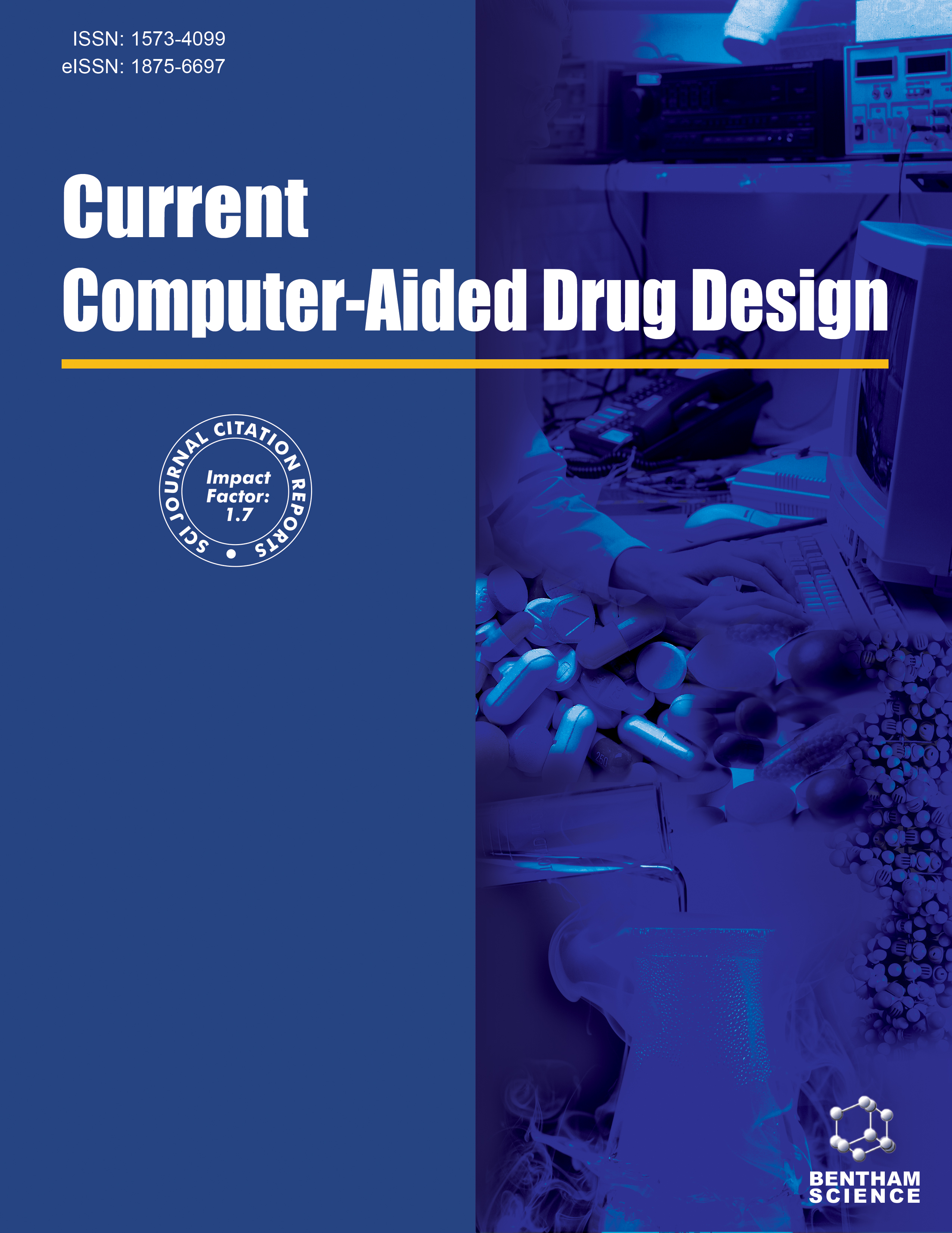- Home
- A-Z Publications
- Current Computer - Aided Drug Design
- Previous Issues
- Volume 18, Issue 1, 2022
Current Computer - Aided Drug Design - Volume 18, Issue 1, 2022
Volume 18, Issue 1, 2022
-
-
Molecular Diversity Assessment using Chemotypes
More LessAuthors: Hugo O. Villar, Raghav Mandayan and Mark R. HansenBackground: Many techniques to design chemical libraries for screening have been put forward over time. General use libraries are still important when screening against novel targets, and their design has relied on the use of molecular descriptors. In contrast, chemotype or scaffold analysis has been used less often. Objective: We describe a simple method to assess chemical diversity based on counts of the chemotypes that Read More
-
-
-
Phenanthridine Sulfonamide Derivatives as Potential DPP-IV Inhibitors: Design, Synthesis and Biological Evaluation
More LessBackground: Diabetes mellitus is a chronic metabolic disorder, characterized by hyperglycemia over a prolonged period, disturbance of fat, protein, and carbohydrate metabolism, resulting from defective insulin secretion, insulin action or both. Dipeptidyl peptidase-IV (DPP-IV) inhibitors are relatively a new class of oral hypoglycemic agents that reduce the deterioration of gutderived endogenous incretin hormones secreted i Read More
-
-
-
Design and In-silico Screening of Peptide Nucleic Acid (PNA) Inspired Novel Pronucleotide Scaffolds Targeting COVID-19
More LessIntroduction: The outburst of the novel coronavirus COVID-19, at the end of December 2019 has turned into a pandemic, risking many human lives. The causal agent being SARS-CoV-2, a member of the long-known Coronaviridae family, is a positive-sense single-stranded enveloped virus and closely related to SARS-CoV. It has become the need of the hour to understand the pathophysiology of this disease, so that drugs, vaccin Read More
-
-
-
Screening and Development of Transglutaminase-2 Inhibitors and their Derivative as Anti-lung Cancer Agent by in silico and in vitro Approaches
More LessAim: This study aimed at screening and development of TG2 inhibitors as anti lung cancer agent. Background: Transglutaminase 2 (TG2) is multifunctional and ubiquitously expressed protein from the transglutaminase family. It takes part in various cellular processes and plays an important role in the pathogenesis of autoimmune, neurodegerative diseases, and also cancer. Objective: The proposed study focused o Read More
-
-
-
Antioxidant, Cytotoxic Activity and Pharmacokinetic Studies by Swiss Adme, Molinspiration, Osiris and DFT of PhTAD-substituted Dihydropyrrole Derivatives
More LessAuthors: Arif Ayar, Masuk Aksahin, Seda Mesci, Burak Yazgan, Melek Gül and Tuba YıldırımBackground: Pyrrole compounds having a heterocyclic structure are the most researched and biological activities such as antioxidant and anticancer activities. Objective: Herein is a first effort to study the significance of heterocyclic compounds to include pyrrole and triazolidine-3,5-dion moiety, on the pharmacokinetic, antioxidant activity and cytotoxic activity on MCF-7 and MCF-12A cell lines. Method: The molecular Read More
-
-
-
Large-scale Prediction of Drug-Protein Interactions Based on Network Information
More LessAuthors: Xinsheng Li, Daichuan Ma, Yan Ren, Jiesi Luo and Yizhou LiBackground: The prediction of drug-protein interaction (DPI) plays an important role in drug discovery and repositioning. Unfortunately, traditional experimental validation of DPIs is expensive and time-consuming. Therefore, it is necessary to develop in silico methods for the identification of potential DPIs. Methods: In this work, the identification of DPIs was performed by the generated recommendation of the unexplored inte Read More
-
-
-
Methylaervine as Potential Lead Compound Against Cervical Carcinoma: Pharmacologic Mechanism Prediction based on Network Pharmacology
More LessAuthors: Wenjia Dan, Yujie Xu, Hongling Gu, Jixiang Gao and Jiangkun DaiBackground: The discovery of therapeutic anticancer agents based on natural products is one of the current research focuses. Network pharmacology will broaden our understanding of drug actions by bioinformatics analysis. Objective: To explore the potential and provide scientific evidence for methylaervine as a lead compound against cervical carcinoma. Methods: Methylaervine was synthesized, and its activity ag Read More
-
Volumes & issues
-
Volume 21 (2025)
-
Volume 20 (2024)
-
Volume 19 (2023)
-
Volume 18 (2022)
-
Volume 17 (2021)
-
Volume 16 (2020)
-
Volume 15 (2019)
-
Volume 14 (2018)
-
Volume 13 (2017)
-
Volume 12 (2016)
-
Volume 11 (2015)
-
Volume 10 (2014)
-
Volume 9 (2013)
-
Volume 8 (2012)
-
Volume 7 (2011)
-
Volume 6 (2010)
-
Volume 5 (2009)
-
Volume 4 (2008)
-
Volume 3 (2007)
-
Volume 2 (2006)
-
Volume 1 (2005)
Most Read This Month
Article
content/journals/cad
Journal
10
5
false
en


